In our October 2015 issue, we took a hard look at the Henry Repeating Arms’ “Original Rifle” in a test that included a Winchester 1892, both rifles in 44-40 WCF. The Winchester won a clear victory in that head-to-head test of lever actions, but we were intrigued by the Henry nonetheless. The Henry rifle worked well enough but had a nasty job of overbuffing, we thought, that gave the brass action a mirror polish at the expense of destroying the edges of the octagonal flats of the barrel. The overbuffing also left a depression, sometimes called a “hog wallow,” where the barrel met the 5-inch sleeve at the muzzle. Partly because of that problem and partly because of the high price, $2300, we gave the rifle a Grade: C rating. That’s not enough recommendation for us to invest in the Henry “Original,” so we began looking for a similarly styled levergun and found the Uberti version of 1860 Henry for a lot less money.
Because the availability of 44-40 ammunition choices is fairly tight (MidwayUSA.com lists 10 choices, with only lead bullets, in weights from 200 to 225 grains), we figured if we found an 1860 we liked, we’d prefer to have a wider range of loads for it, so we acquired one chambered in 45 Colt (aka Long Colt), for which MidwayUSA.com lists 56 results, in bullet weights from 145 grains to 360 grains in lead, copper, even shotshells. Looking at these 1860s point by point, we realized we were looking for a rifle that would trump Henry’s Henry — and it would be no easy task for the Uberti to take down the namesake 1860. Here’s what we found.

Uberti 1860 Henry Rifle 342880 45 Colt, $1429
Uberti makes five versions of this rifle. The Trapper 342910 in 45 Colt has an 18.5-inch barrel, a brass frame and buttplate, and a case-hardened lever. The Rifle models have similar cosmetics to the Trapper but have 24.5-inch barrels, one chambered in 44-40 (342390) and our test gun in 45 Colt. Two more Rifle models come in the same chamberings (342370 in 44-40 and 342360 in 45 Colt) and have the same barrel lengths as the brass ones, but they display case-hardened frames and levers and blued buttplates and list for $30 more.
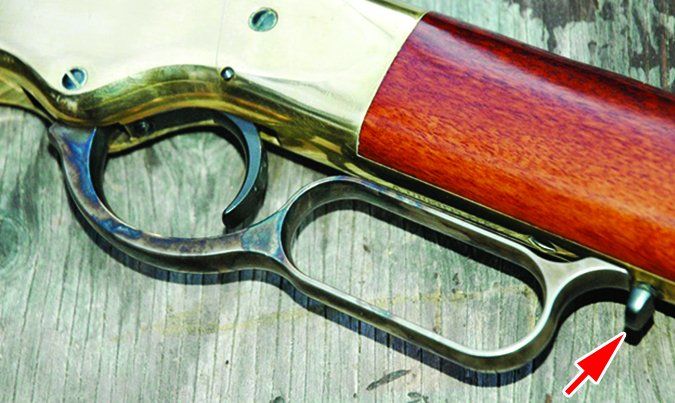
Our first glance at the Uberti test model was extremely satisfying. We found the barrel flats to be properly done. The edges between them were sharp enough and, sighting along the flats, we found them to be dead level. The bluing was authentic looking. It was not rust bluing, but looked close enough to it to satisfy us. Our impression was that this is how the 1860 Henry is supposed to look. While the action was not quite so glossy as the Henry version, it still reflected much like a mirror and was, like the barrel flats, dead flat. The walnut stock had some lovely tiger-striping in it that our photos might not pick up, and inletting was excellent. While the stock finish was mighty hard, it had none of the milkiness that Henry’s rifle had.
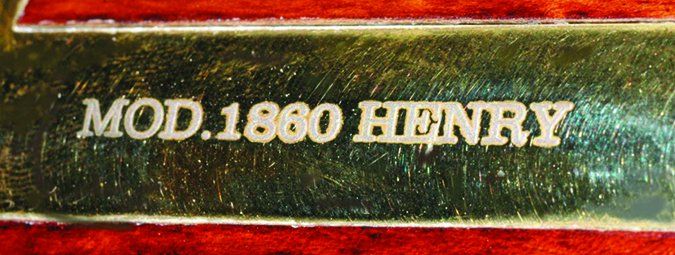
The little button behind the loading lever had distinct stops every 90 degrees, a feature was missing from the previously tested version. The sights were identical to those found on the Henry Henry, the rear having all the same little cuts, holes, notch contours, elevation slide and markings as on the other rifle. The front sight was also identical in contour to the other rifle, and had a flat-topped blade insert of somewhat shiny metal. The hammer was blued, but the loading lever was case hardened. We believe the original Henry rifles (from the 19th century) had blued parts, but there were some finish variations in the 1866 and 1873 rifles that followed it, so we believe it’s possible some of the original Henrys had case-hardened parts. If that’s not true and the dull case coloring offends you, rub the parts with cold blue and call it good. We don’t think that’s necessary, however — it looked mighty nice.
The rifle had the caliber marked just behind the rear sight on top of the barrel as “45 COLT.” The left side of the barrel had the importer’s name and Uberti’s name tastefully small. Behind that were two Italian proof marks. On the top of the barrel, an inch in front of the rear sight, was “PATENT. OCT. 16. 1860.” The top tang of the action held the designation “MOD. 1860 HENRY” and the bottom tang held “A. UBERTI – ITALY” and the serial number. The action proof marks were under the action just behind the loading platform. There were no other markings on the rifle.
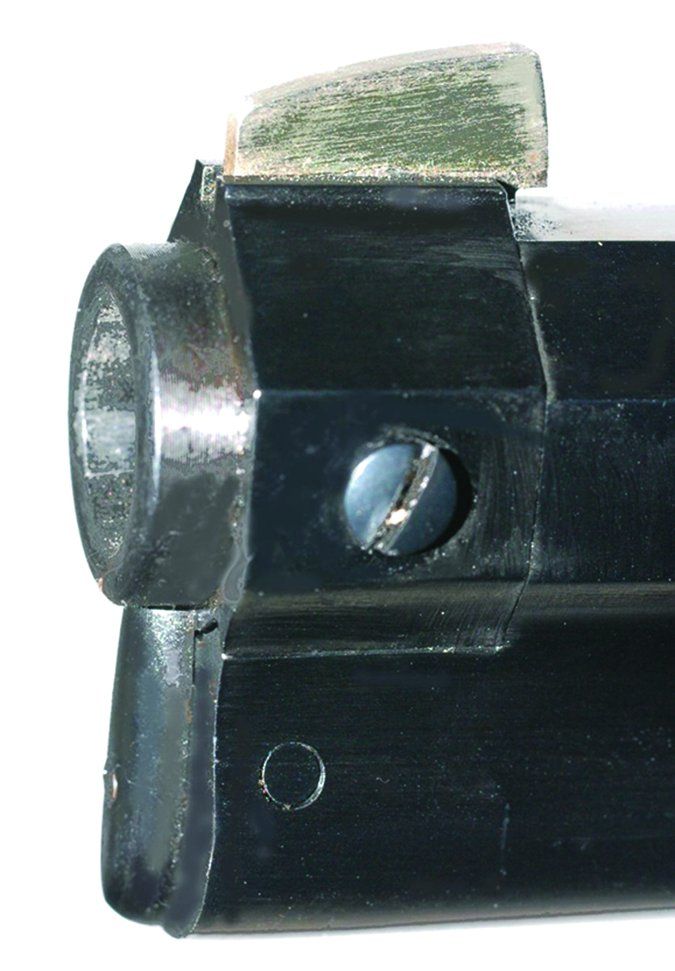
We found all the controls to be smooth, including the “loading” gate at the front of the rifle. We did note the edges of just about everything — the front gate system, the edges of the magazine cut along the bottom of the rifle, etc. — were all sharp enough to cut the hands. A little wear from use will fix that, or these could be deburred carefully by the owner. We can’t knock the rifle for that, however, because it all looked clean and crisp with those sharp edges. Loading the rifle was easy, by which we mean the follower easily raised the front lock to let the gate swing open without any of the fiddling the Henry’s version needed. The magazine held 13 rounds, despite the manual saying it was 10. The website has it right at 13.
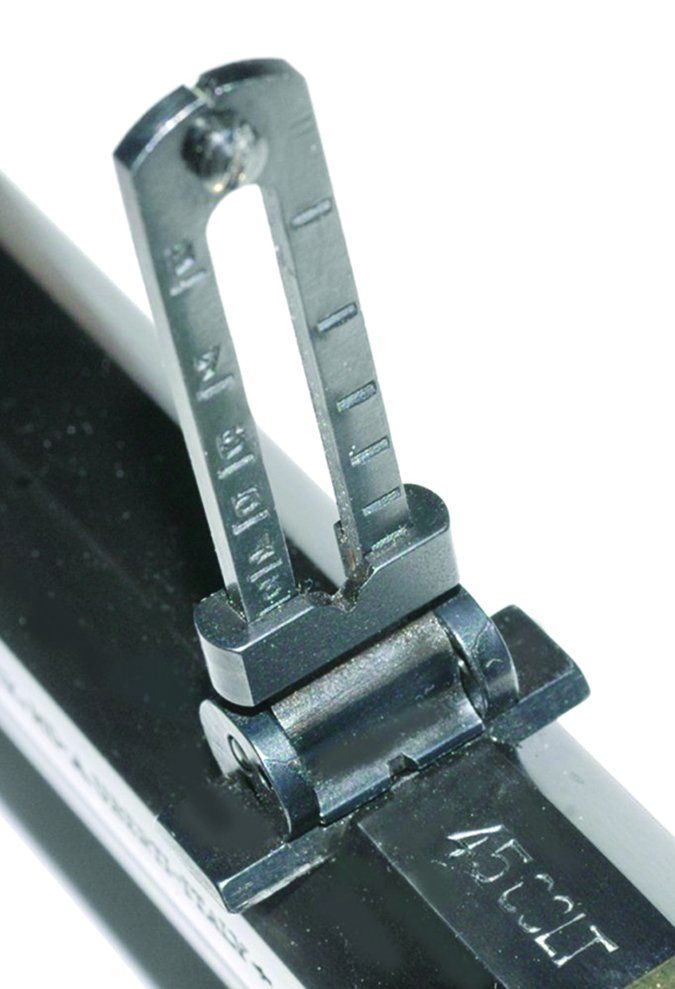
Unlike the other rifle, this one came with a comprehensive yet brief manual that told how to operate it all. The manual had the mumbo-jumbo we mentioned in our earlier report about where the lever ought to be during the loading process, and we again state that it doesn’t matter where you put the lever when you load the rifle. In fact, if you leave the lever partly open, it’s possible to shove the carrier down so it can catch the first round loaded. But when you close the lever to the firing position, that round is not brought up into battery. In short, put the lever anywhere you want it during the loading process, and it will still take a full cycle of the lever to get the first round into the chamber. We again state it’s a good idea to have the rifle entirely empty when you load the rifle to avoid the possibility of a major blunder that could cost you a hand, or worse. That’s why we don’t call the capacity 13+1, as it’s given on the website.
We tested mainly with PMC cowboy-type ammo, which is a mild load with a hard lead bullet. We also tried, but did not record, Remington factory ammo and some handloads. Our handloads were a touch hotter than the PMC, and maybe shot a touch better. The Remington ammo was balky on entering the chamber. Remington’s bullet had a slight shoulder, which was part of the problem. Like the other rifle, the back edge of the Uberti’s chamber had sharp corners, though no burrs, and a bit of time with a scraper there should answer most loading questions. However, a shoulder on the bullet will never help matters. The rifle did not seem to require a break-in period to deburr it, as had the other one.
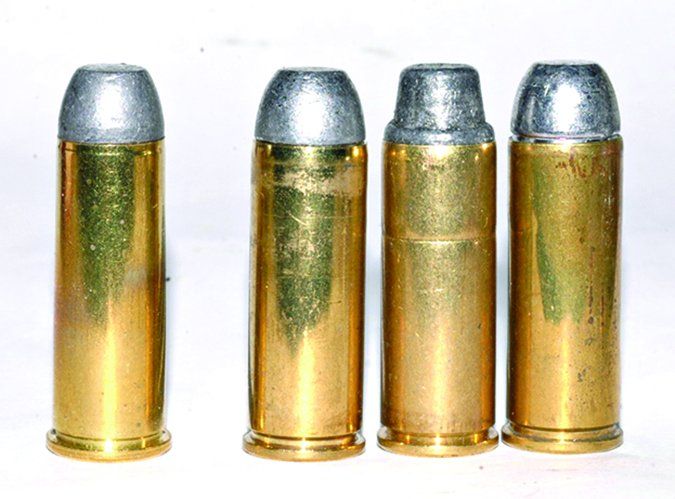
We cleaned the Uberti and went right to work at the range, and the rifle did all it could to please us. Be advised there are some hot 45 LC loads, such as from Buffalo Bore, that probably ought not to be used in this rifle, certainly not as a steady diet. To our knowledge that problem does not exist with the 44-40 version, so if you opt for this caliber, use some sense in choosing your ammunition. We suspect it’d be a delight with black powder.
Groups with the PMC averaged 2.3 inches at 50 yards off the bench. The front sight was slightly shiny, and we chose to blacken it to get a better sight picture in our late-fall light. We accomplished that with a Sharpie, and that helped our groups. To our joy, the rifle had a decent trigger pull, 6.2 pounds and free of creep. That was another problem with the $900-more-costly Henry version. It had an extremely heavy trigger pull.
There were no failures to feed, fire, or eject. All the controls worked smoothly, and our range session was most pleasant. Recoil was not an issue. Accuracy was plenty good enough, we thought. We thought this would be an excellent gun for Cowboy Action matches if you favor the 45 LC, as some of us do. It’s not as fast to reload as, say, a Winchester 1873, but it does hold lots of ammo. Of course, original Henry rifles were never chambered for anything but the 44 Henry Rimfire, so whether you choose 44-40 or 45 LC for your modern 1860 Henry is of no consequence. If this were a copy of an 1873 Winchester, you’d have to choose 44-40 (or 38-40) for authenticity, but if you’re shooting the 1860 Henry in those matches, it doesn’t matter which “incorrect” caliber you choose. Be sure to match the rifle’s caliber to that of your handguns as you ride off into the sunset to your next shooting match, just as they did in the Old West.
Our Team Said: We thought the Uberti 1860 Henry was as good a rifle as any we’ve tested, modern or otherwise. We were extremely gratified to see a company making such a high-grade version of the old Henry, never mind where in the world it’s made. We’d buy this one instantly if we wanted a brass gun for fun.
Written and photographed by Ray Ordorica, using evaluations from Gun Tests team testers.





























As a young boy I had the privilege of hunting rabbits with my great grandfathers Henry rifle that belonged to his father and now belonged gs to my Uncle. I have always wanted one of my own so about 12 years ago I purchased a Uberti 1860 Henry and absolutely loved it! It was the earliest production of the .45 Colt model that I could find and wanted it in .45C to match my 1873 Colt single six.
Then I saw a Henry Repeating Arms “1860 Original”… and absolutely fell in love. The quality, fit, finish, smooth function, bluing and the absolutely gorgeous wood stock!… and the accuracy of the Henry over my Uberti was amazing!… so two years ago I bought one and have not been one tiny bit disappointed with the fact that I paid a thousand dollars more, it’s worth every penny and it’s American made. I still adore my Uberti… but my “Henry Original” is hands down the superior rifle of the two reproductions. I will always hold a special place in my heart for my great great grandfathers Newhaven Arms 1860 Henry, but… my “Henry Repeating Arms Co” rifle will always hold second to that one hands down “no contest”
Can’t find one anywhere! Definitely not for 1,400 or so.